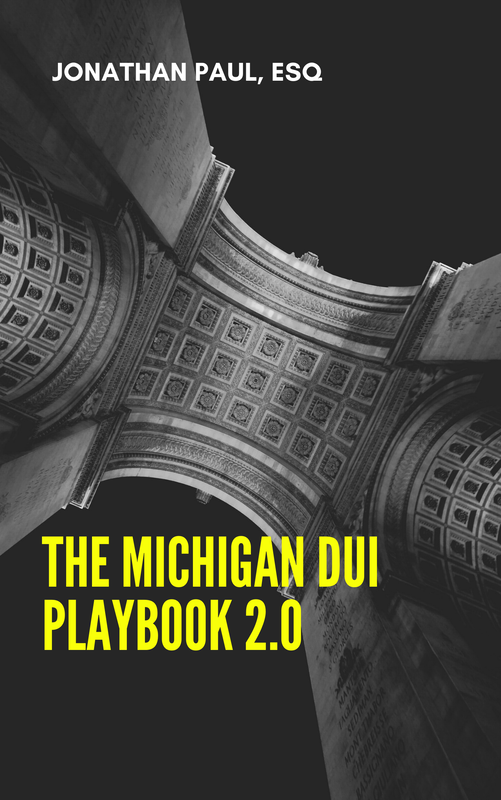|
One of the most common field sobriety tests requested by police officers in Michigan is the NGN test. Nystagmus is an involuntary twitching of the eyes. When an officer checks your eyes, he is looking for this switching. The officer is looking for distinct Nystagmus at the maximum deviation, a lack of smooth pursuit and the onset of the Nystagmus prior to 45 degrees. The proper methods for administering the HGN test is laid out in detail in the National Highway Traffic Safety Administration (NHTSA) manual.
Along with best one of the most popular tests offered, many officers and prosecutors believe this test to be the holy grail of field sobriety tests. While the test does have some scientific importance, the test is only reliable if conducted properly. When I review the police reports and videos in a DUI case, I am looking to make sure the officer followed all of the proper instructions and all precautions were taken to have a fair test for my client. The test begins with the officer instructing the client to put their feet together, and keep their hands to their side. The officer will then instruct the client follow a finger, pen or other device with your eyes, and making sure to keep your head from moving. It’s important to make sure that the officer has asked the client about contact lenses, and any other medical conditions that might be relevant. Before examining your eyes for the three above factors, the officer should be checking for equal tracking and to make sure your pupils are of the same size; failure to do so, and failure to properly ask about contact lenses could deem the results unreliable. The officer checks for equal tracking by starting at the nose, and going right then back to the center then left. Without this initial check, the rest of the exam is worthless. Once the officer has conducted this trial run, he is now looking for smooth pursuit, and looking to see if there is involuntary jerking of the eyes as the object goes from side to side; this is supposed to be two full passes. The officer then looks for Nystagmus at maximum deviation meaning that there is no white visible at the outside of the eye; it requires the officer to hold your eye at maximum deviation for at least 4 seconds, or the results could be unreliable. Finally, the officer will now look for onset of Nystagmus prior to 45 degrees, and vertical Nystagmus. The first requires the officer to bring the eye out from the middle slowly, and to look for the angle of the onset to see if it’s prior to 45 degrees. The second requires the officer to move your eye vertically, and to evaluate the onset of Nystagmus. Failure to follow ANY of these vital instructions could cause Nystagmus, which would other not be present, and will give a false result. The officer’s goal is to find Nystagmus, which in his training tells him that the driver is intoxicated or impaired, which helps prosecute the case. It’s quite rare that the dash cam video provides a full account of this test to ensure that the proper technique and instructions were provided When I look at the evidence in a DUI case, I carefully evaluate any information available to see if the HGN test was done properly. If there is no video then I am going to cross-examine the officer on all of the instructions which are laid out in his training manual, and to make sure he followed it. The officer may or may not have actually followed it, but usually if an officer is not telling the truth, something will pop up during a carefully tailored cross-examination. Usually the most fruitful result of this cross-examination is evidence that my client was facing headlights or traffic, which is now allowed per the training manual for a proper HGN test. Putting the HGN test in question may not be the smoking gun to a not guilty verdict, but it can be a further minor victory when it comes to the officer’s credibility and attention to detail, which puts other parts of the case into question. Comments are closed.
|
Click to Email Me Categories
All
|
Ann Arbor Office LocationPlymouth Office Location |
Representing DUI Clients in MichiganRepresenting clients charged with a DUI in Ann Arbor, Canton, Brighton, Howell, Saline, Adrian, Taylor, Plymouth, Northville, Westland, Ypsilanti, Pittsfield Towsnhip, Warren, Sterling Heights, Farmington, Pontiac, Romulus, Lansing, Novi, South Lyon, Southfield, Birmingham, Bloomfield Hills, Royal Oak, Troy, Rochester, Jackson, East Lansing, Garden City, Livonia, Dearborn, Detroit, St Clair Shores, Hazel Park, Ferndale, Madison Heights, Waterford, Milford, Shelby Township Clarkston, Oak Park, Berkley, Fraser, Sterling Heights, Clinton Township and others throughout Washtenaw, Wayne, Monroe, Jackson, Genesee, Macomb, Ingham, Lenawee, Livingston and Oakland County.
|







